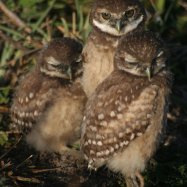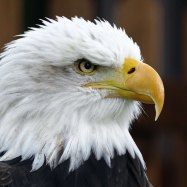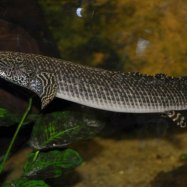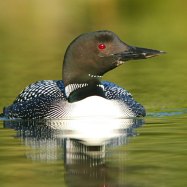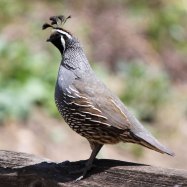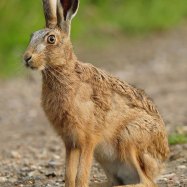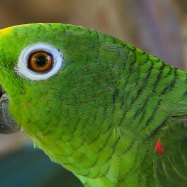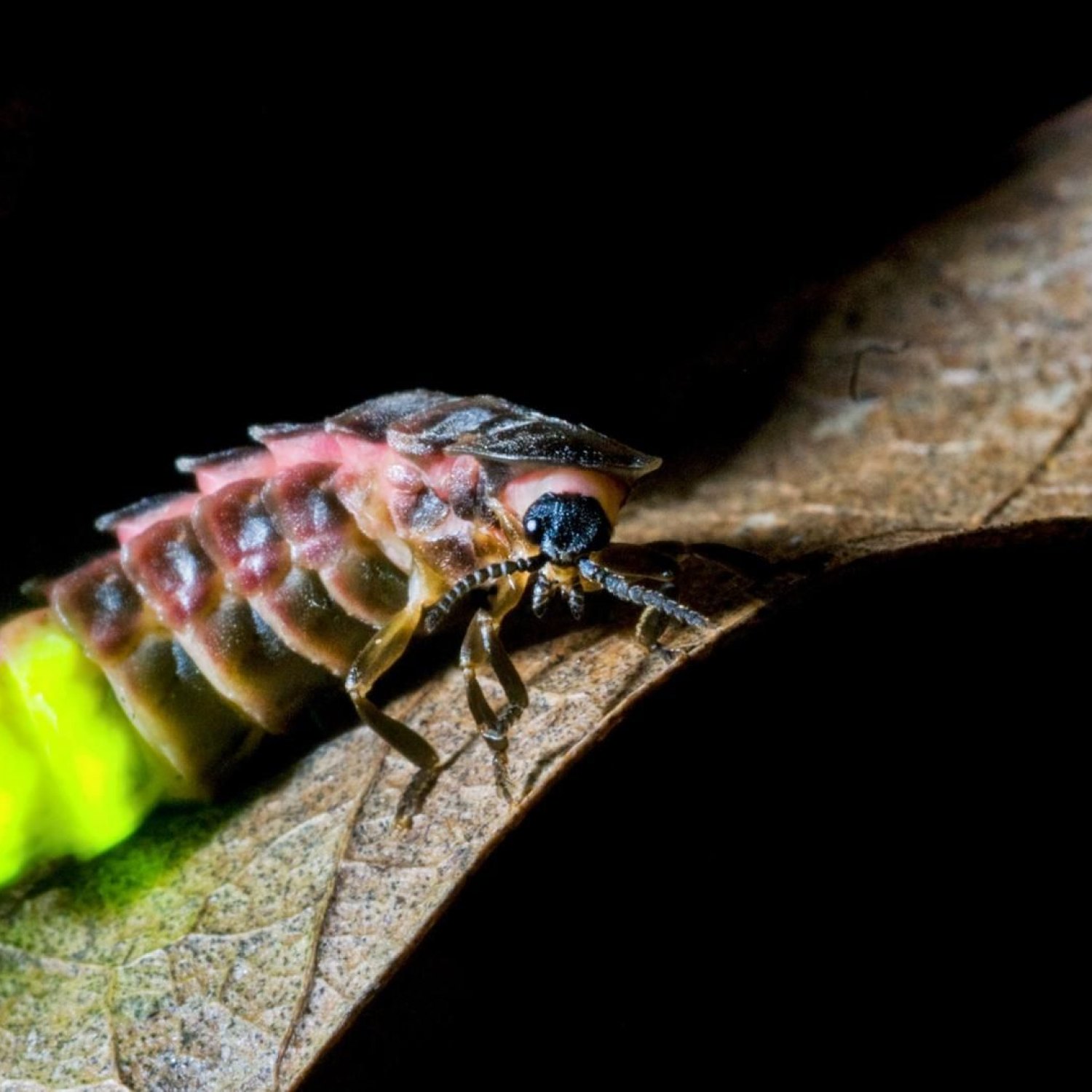
Glowworm
3-5cm
Glowworms, also known as fireflies, are fascinating creatures found in caves and forested areas. These tiny insects belong to the Keroplatidae family and have a distinctive cylindrical body shape. Measuring only 3-5cm in length, these animals create a mesmerizing glow through a process called bioluminescence. Next time you're out exploring nature, keep an eye out for these enchanting little creatures! #Glowworms #Fireflies #NatureExploration
Animal Details Summary:
Common Name: Glowworm
Kingdom: Animalia
Habitat: Caves, forests, and wetlands
The Luminous Beauty of the Glowworm: A Unique Species in the Depths of New Zealand
Deep in the dark caves and forests of New Zealand, resides a mesmerizing creature that lights up the night with its gentle glow. Known as the glowworm, this fascinating insect belongs to the Arachnocampa luminosa species and is a true wonder of the natural world. From its distinctive appearance to its unique feeding habits, there is much to discover about this little-known animal.Introducing the Glowworm: A Magnificent Insect in the Kingdom of Animalia
The glowworm, also commonly known as the New Zealand glowworm, is an insect that belongs to the kingdom Animalia, the largest and most diverse group of organisms on the planet Glowworm. Within this kingdom, the glowworm is classified as part of the phylum Arthropoda, the class Insecta, the order Diptera, and the family Keroplatidae.The scientific name for this species, Arachnocampa luminosa, comes from the Greek words "arakhnē" meaning spider, "kampa" meaning caterpillar, and "luminosa" meaning light, reflecting the insect's appearance and behavior. While the common name, glowworm, derives from the glowing light emitted by the insect, making for an appropriate and fitting name.
A Habitat Fit for a Luminous Creature: Where Can You Find the Glowworm?
The glowworm is native to New Zealand and can also be found in certain regions of Australia. In its natural habitat, this insect is found in a variety of environments, including caves, forests, and wetlands. However, they are most commonly found in the damp and dark caves of New Zealand, where they thrive and reproduce.Within these caves, their luminescent light can be seen twinkling on the ceilings, creating a magical atmosphere in an otherwise eerie setting. This natural phenomenon is often referred to as "glowworm grottos" and is a popular tourist attraction in New Zealand.
Feeding Habits of the Glowworm: An Interesting Twist to the Food Chain
While most insects feed on plants or other insects, the glowworm is somewhat of an exception to the rule Gharial. As larvae, they are carnivorous and feed on small insects that get trapped in their sticky silk threads, which hang down from the ceiling of their cave or forest home.Once they reach adulthood, the glowworms do not feed at all, relying solely on the energy reserves they accumulated as larvae. This is a unique adaptation for an insect and makes the glowworm one of the few species in the animal kingdom that does not feed as an adult.
A Colorful Insect in Every Way: The Appearance of the Glowworm
The glowworm's appearance is a sight to behold. Its body is cylindrical, measuring between 3 to 5 cm in length, and is covered with a soft and delicate skin. Their elongated bodies are pale yellow in color, with some variations of greenish-blue, making them stand out in their dark habitats.However, the most striking feature of the glowworm is the glowing light it emits. This light is produced by a special organ located towards the end of its abdomen, known as the light organ. The unique chemical reaction that occurs within this organ is what creates the beautiful bioluminescent display of the glowworm.
The Role of Dim Light in the Life Cycle of the Glowworm
The dim light produced by the glowworm serves various purposes in the insect's life. For one, it acts as a lure for its prey, attracting them towards the sticky silk threads and ultimately leading to their capture.Additionally, this light also plays a vital role in the mating process of the glowworm. Male glowworms are attracted to the light produced by the females, and once they locate them, they use their long antennae to assess their size and reproductive fitness before attempting to mate.
Geographical Distribution and Conservation Status of the Glowworm
The glowworm is endemic to New Zealand and can also be found in certain parts of eastern Australia. They are only found in specific regions within these countries, with their distribution being limited by their specialized habitat requirements.While the glowworm is not currently listed as a threatened species, there are still concerns about their vulnerability due to the destruction of caves and forests, as well as other environmental factors. As a result, they are protected by law in New Zealand, and any disturbance of their natural habitats is strictly prohibited.
The Enigmatic Life Cycle of the Glowworm: From Larvae to Adulthood
The life cycle of the glowworm is a unique and fascinating process. It begins as eggs, which are laid on the ceiling of the cave or forest floor, where they remain for about two weeks before hatching into larvae.The larvae then spend the next six to twelve months feeding and growing, during which time they produce their signature glowing light. Once they reach adulthood, they undergo a metamorphosis and emerge as adult glowworms, ready to mate and start the life cycle all over again.
Intriguing Behaviors and Adaptations of the Glowworm
Aside from their luminescent light, the glowworm has some other intriguing behaviors and adaptations that make it a truly unique species. For example, they are nocturnal insects, with their light being most visible at night. This nocturnal lifestyle allows them to avoid predators that are active during the day.In addition, the glowworms have excellent hearing, using their long antennae to detect the sounds of flying insects and capturing them with their silk threads. They are also sensitive to changes in temperature and humidity, which helps them to regulate their activities and conserve their energy.
In Conclusion: A Natural Marvel in the Depths of New Zealand
The glowworm is an exceptional insect that adds to the already diverse and intriguing animal kingdom. From its glowing light to its unique feeding habits and behaviors, the glowworm is a fascinating creature that deserves recognition and admiration.While we may not know everything about this species, one thing is for sure – the glowworm is a natural marvel that continues to captivate and amaze those who have the chance to witness their luminous beauty. So, the next time you find yourself exploring the depths of a New Zealand cave or forest, keep an eye out for the glowing light of the elusive and enigmatic glowworm.

Glowworm
Animal Details Glowworm - Scientific Name: Arachnocampa luminosa
- Category: Animals G
- Scientific Name: Arachnocampa luminosa
- Common Name: Glowworm
- Kingdom: Animalia
- Phylum: Arthropoda
- Class: Insecta
- Order: Diptera
- Family: Keroplatidae
- Habitat: Caves, forests, and wetlands
- Feeding Method: Larvae are carnivorous, adults do not feed
- Geographical Distribution: New Zealand and Australia
- Country of Origin: New Zealand
- Location: Caves and forested areas
- Animal Coloration: Varies from pale yellow to greenish-blue
- Body Shape: Cylindrical
- Length: 3-5cm
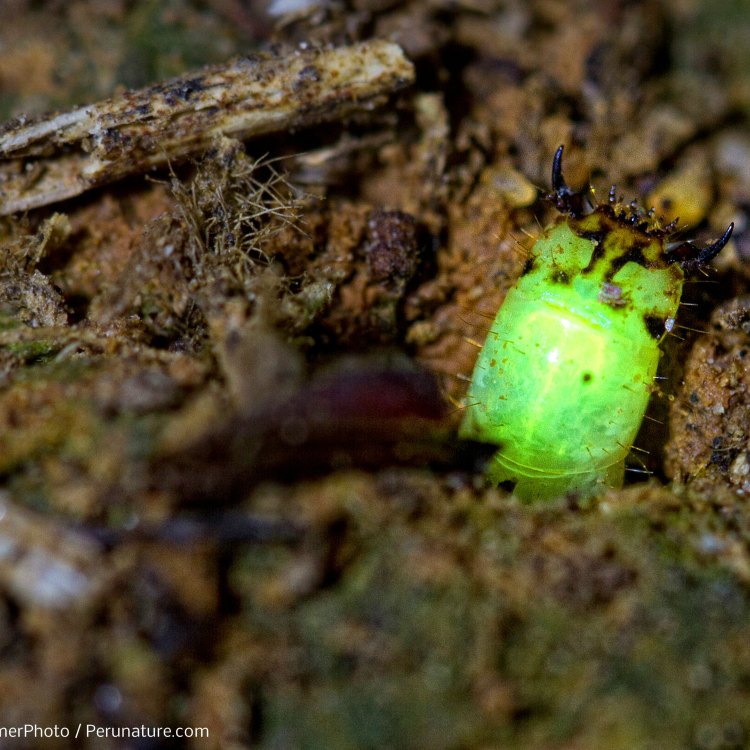
Glowworm
- Adult Size: Small
- Average Lifespan: 6-12 months
- Reproduction: Sexual
- Reproductive Behavior: Males fly and release sticky silk threads to attract females
- Sound or Call: Glowworms do not produce sound
- Migration Pattern: No regular migration patterns
- Social Groups: Not social, but often found in clusters
- Behavior: Glowworms use bioluminescence to attract prey and mates
- Threats: Habitat destruction, pollution, and light pollution
- Conservation Status: Not Evaluated
- Impact on Ecosystem: They play a role in the food chain as both predators and prey
- Human Use: Tourist attractions, ecotourism
- Distinctive Features: Bioluminescent glow
- Interesting Facts: The glowworm's glow comes from a chemical reaction called bioluminescence
- Predator: Other insects, birds, and spiders
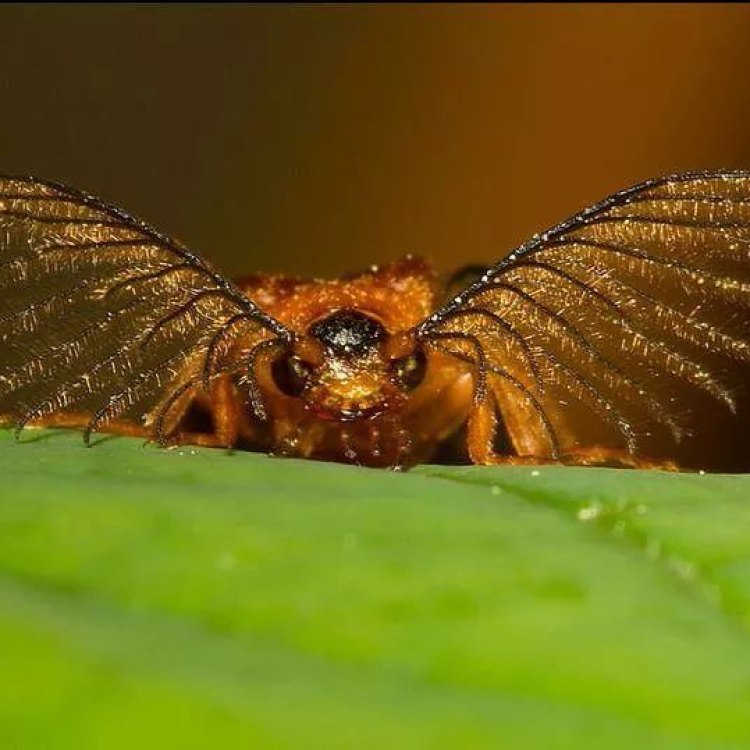
Arachnocampa luminosa
Glowworms: Illuminating the Night Skies
When the sun sets and the darkness of the night falls upon us, the world transforms into a mystical and enigmatic place. One of the most enchanting creatures of the night is the glowworm. These small, luminescent insects have captured the imagination of humans for centuries with their magical and ethereal glow.Found in various parts of the world, including Australia, New Zealand, and Europe, glowworms are fascinating creatures with unique capabilities and behaviors PeaceOfAnimals.Com. In this article, we will delve deeper into the world of glowworms, exploring their life cycle, behavior, ecological significance, and human interactions.
Adult Size
Glowworms are small creatures, typically ranging from 0.3 to 3 centimeters in size. They belong to the insect family of fungus gnats, and their scientific name is Arachnocampa luminosa. The larvae of the glowworm are larger compared to the adult insect, growing up to 2 centimeters in size.
Average Lifespan
The lifespan of a glowworm is relatively short, ranging from 6 to 12 months. During this time, they go through various stages of development, from eggs to larvae to pupae and finally, adult insects.
Reproduction and Reproductive Behavior
Like most insects, glowworms reproduce sexually. Male glowworms fly around at night, while females stay attached to the ground Goldcrest. The males produce a sticky silk thread that they use to attract females. Once the female has caught onto the thread, the male will fly towards her, and mating occurs.
After mating, the female glowworm will lay her eggs on the ceiling of a cave or a similar structure in its habitat. She will lay her eggs in clusters to maximize survival chances for the next generation of glowworms.
Sound or Call
Unlike some insects that produce chirping or buzzing sounds, glowworms do not produce any sound. They rely solely on their bioluminescence to attract prey and mates.
Therefore, if you happen to go on a night walk in a forest, and you see little glowing lights, be assured that it is a glowworm and not a firefly, as they are often mistaken for.
Migration Pattern
Glowworms do not have any regular migration patterns. They typically stay in one place throughout their lifespan, but their larvae may move to new locations to find food.
Social Groups
Glowworms are not social insects. They do not form colonies or live in groups. However, they are often found in clusters in their natural habitats, which are typically dark and damp. These clusters of glowworms are a magnificent sight to behold, providing a glimpse into the wonders of nature.
Behavior
One of the most distinctive features of glowworms is their bioluminescence, which they use to attract prey and mates. This bioluminescence is produced by a chemical reaction in the glowworm's body, and it is a captivating sight to witness.
The glowworms use their light to lure small insects towards them, which they then capture in their sticky strands of silk. They are primarily carnivorous, feeding on small insects such as snails and slugs.
In terms of mating behavior, the males produce a flashing pattern of light to attract females. Once they detect a female, they will fly towards her, and the mating process begins.
Threats
Unfortunately, like many other species, glowworms also face threats from human activities. Habitat destruction, pollution, and light pollution are the primary threats to their survival. As they are sensitive to light, artificial light in their habitat can disrupt their signaling behavior, making it difficult for them to find mates or prey.
Furthermore, urban development and deforestation have led to the destruction of their natural habitats, causing a decline in their population numbers. It is essential to raise awareness about these threats and take necessary measures to protect and conserve these mesmerizing insects.
Conservation Status
Despite being threatened by various human activities, the conservation status of glowworms is still not evaluated. More research and data are needed to determine the population numbers and the exact level of threat they face.
The International Union for Conservation of Nature (IUCN) assesses the conservation status of species based on data collected by experts and researchers. However, as glowworms are not yet being studied extensively, their conservation status is yet to be determined.
Impact on Ecosystem
As with all other creatures, glowworms play a crucial role in the ecosystem. They are both predators and prey, providing food for other insects, birds, and spiders. Their bioluminescent glow not only helps them attract prey and mates but also serves as a warning signal for predators to stay away.
Moreover, their larvae feed on dead leaves and other organic matter, playing a vital role in the decomposition process. Therefore, their presence in the ecosystem is crucial for maintaining a healthy and balanced environment.
Human Use
Glowworms have captured the fascination of humans for centuries. Their glowing lights have inspired poets and writers, and their unique behavior has intrigued scientists. In modern times, they have also become popular tourist attractions, attracting visitors from all around the world.
Countries like New Zealand and Australia offer guided tours to caves and forests to see these enchanting creatures in their natural habitat. This has also led to the development of ecotourism, which promotes sustainable practices and conservation efforts.
Distinctive Features
The most distinctive feature of glowworms is their bioluminescent glow. It is one of the most spectacular light shows found in nature. The glowworms produce this light through a chemical reaction involving a substance called luciferin and an enzyme called luciferase. This reaction produces a greenish-blue light, which is emitted from the tip of their abdomen. The intensity of the light can vary from species to species, and it is truly a sight to behold.
Interesting Facts
Apart from their bioluminescence, there are various other interesting facts about glowworms that make them even more fascinating. For instance, their larvae spin sticky silk threads to create a web to capture prey, much like spiders. However, unlike spiders, they use these threads to pull their prey towards them, instead of waiting for it to get caught.
Another interesting fact is that glowworms are not worms at all, but rather larvae of small flies. They only gain their wings and become adult insects for a brief period, mainly to mate and lay eggs before they reach the end of their lifespan.
Predators
Like all other creatures, glowworms also have their share of predators. Birds, spiders, and other insects are known to feed on glowworms. To avoid being eaten, the larvae and adult insects both use their bioluminescence as a camouflage to blend in with their surroundings and escape detection.
Moreover, studies have shown that the chemicals and toxins produced by some species of glowworms can make them taste bitter and unappetizing to predators. This further helps in their survival and protection against predators.
In conclusion, glowworms are truly awe-inspiring creatures with unique capabilities and behaviors that continue to fascinate us. However, it is also essential to understand and protect these creatures so that we can continue to enjoy their magical glow for generations to come. We must take necessary measures to conserve their habitats and minimize our impact on their survival. After all, they are not only crucial to the ecosystem but also an integral part of our natural heritage. Let us appreciate and admire the beauty of glowworms, illuminating the night skies with their bioluminescent glow.
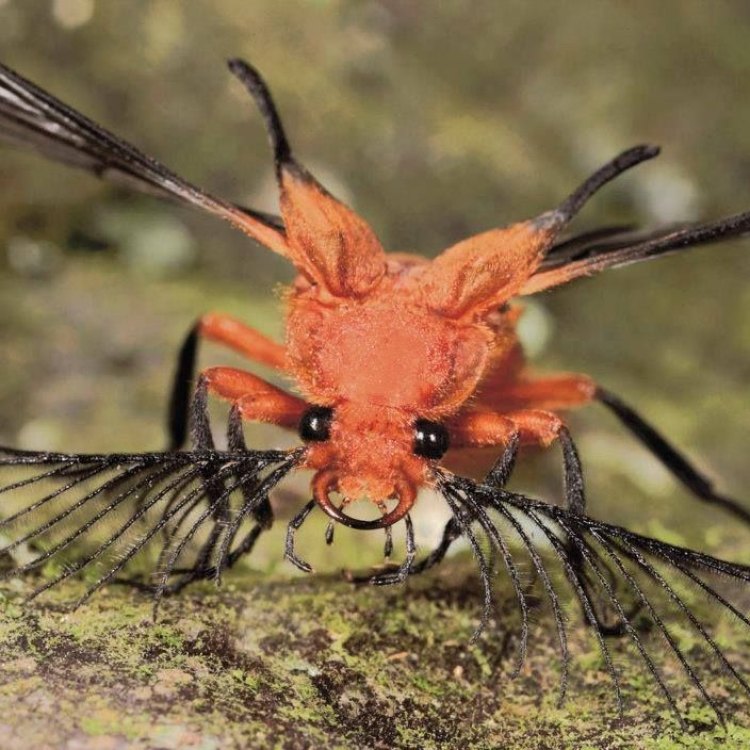
The Luminous Beauty of the Glowworm: A Unique Species in the Depths of New Zealand
Disclaimer: The content provided is for informational purposes only. We cannot guarantee the accuracy of the information on this page 100%. All information provided here may change without prior notice.


